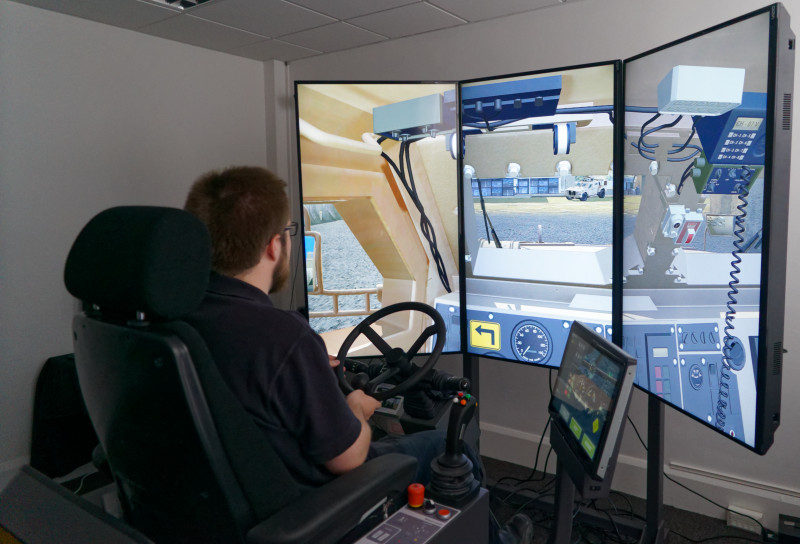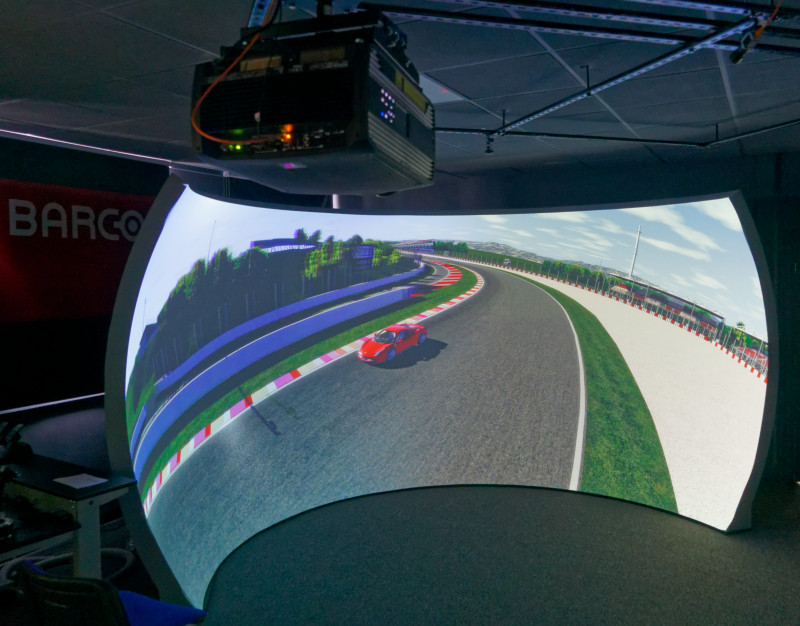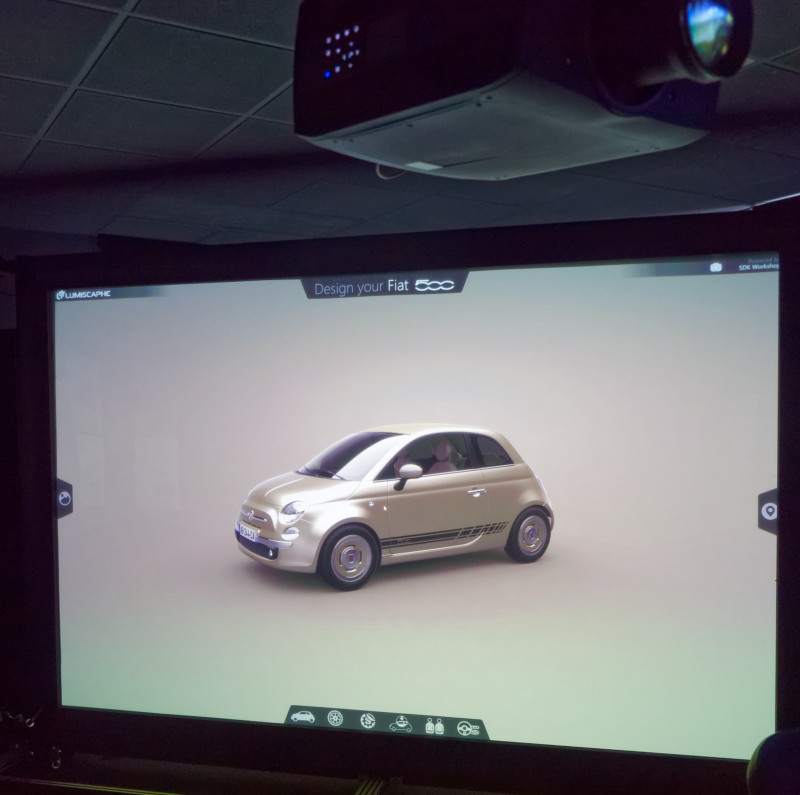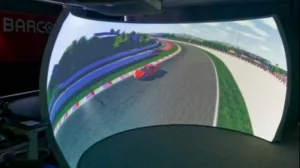We decided to make the most of the (relative) slowdown of news in the summer to catch up with a company that we met at the Laval Virtual conference and which had invited us to visit. Antycip is a French company that specialises in simulation and virtual reality system development and installation and also has a demonstration suite near Oxford in the UK. The company also has a demo suite in Italy and is in the process of organising a facility in its home country of France. We were shown around by Frank Reynolds, who is European Marketing Manager.
The demonstration suite was set up with support and collaboration from Barco, whose projectors are used throughout the site, mostly laser phosphor, but with a couple of lamp-based units, still. Blending and warping is generally from Scalable. Barco projectors tend to be most often specified for UK projects because of a strong relationship with the company. In France, Christie tends to be the most frequently used projectors and until a couple of years ago, Sony was also specified.
As well as systems integration services, Antycip has its own software, System Tool Kit (STK) The software is designed to allow the modelling of complex systems (for simulations) and is particularly popular as a toolkit for satellite tracking. For example, if you didn’t want to be seen by a ‘spy’ satellite, you could model the positions of known units and work out when and where to appear. This has many applications in military and intelligence simulations as well as commercial applications. The company also works with CMLabs of Canada to exploit its high quality physics engine.
The company’s software was developed from the simulation side in contrast to the kind of software such as that from Bohemia Interactive, which was developed from the visually attractive game side.
Combining these technologies with immersive displays allows the development of professional level simulators, for example for automotive companies and there are a large number of racing car developers near Oxford that the company works with. It also works with other companies in this industry and we had a look at a racing car simulator that featured a bright red Italian racing car (we’re not allowed to tell you the brand ? )
Reynolds told us that the French government has been supporting the development of CAVEs and immersive display areas that can be used on a rental basis by SMEs that could not afford to create their own facilities. Antycip has created a lot of CAVEs and we reported on the Tore system that it installed in Lille (Christie Collaborates with Antycip) and the company can also create six-sided CAVEs and knows how to deal with tricky issues such as the images from below. The company is seeing that interest in VR (which offers a lower cost entry point) helps to develop the market for higher end CAVE installations as users start to want to be able to collaborate in the virtual environments and that is easier without goggles.
The first area we looked at uses dual F50 projectors with image management by Scalable to create a 6m x 2m display surface. The blending was very good and the image certainly looked seamless to us.
 This 6m x 2m display uses dual projectors. Image:Mek
This 6m x 2m display uses dual projectors. Image:Mek
Next we looked at a simulation set-up using three flat panel displays and being used as a driving simulator for military vehicles. (I was relieved that after I crashed within the first few yards, it turned out that the steering system was not working correctly!) The displays can be rotated to give a more vertical arrangement which can be very useful for other simulations. For example, the company has developed systems for the Construction Industry Training Board (CITB) that are used to train crane operators. These have very high fidelity and impress even very experienced operators. Antycip is a distributor for Vortex Advantage software and hardware.
 Vehicle and equipment simulations can be demonstrated. Image:Meko
Vehicle and equipment simulations can be demonstrated. Image:Meko
Dual F70 projectors from Barco were set up to create a curved and immersive display that is often used for a range of sports simulations including motor racing. An interesting discussion we had was about the use of audio in simulations. Few of the simulators that the company supplies have audio and Reynolds told us that those that adopt audio often stop using it quite soon after installation as it is very hard to keep it very realistic. However, the company is looking at new object-oriented audio technologies that might be more accurate than previous audio architectures. A technology that is being evaluated is Barco AudioCue. One of the challenges with audio in multi-user simulations is ensuring that each user has the right audio.
 Two projectors are used for this curved configuration. Image:Meko
Two projectors are used for this curved configuration. Image:Meko
A large Barco projector was set up in a rear projection system showing the kind of simulation that might be used by an automotive or other engineering companies that are looking for more photo-realistic images. Software from Lumiscaphe is used to show high quality renders. We were surprised that colour accuracy doesn’t seem to be a big issue in this application, Antycip has found.
 Photo-realistic renders can also be shown. Image:Meko
Photo-realistic renders can also be shown. Image:Meko
One of the topics that we discussed with Reynolds was the ITEC show and he told us that a number of exhibitors were quite unhappy with the level of visitors to the Stuttgart event this year. The London event in 2016 was good, but attendance dropped in 2017 (Rotterdam) and Stuttgart. Most exhibitors would be happy to be in London every year, but conference attendees like to move around Europe so there is a conflict. Next year’s event will be in Stockholm and a number of previous exhibitors may drop out.

